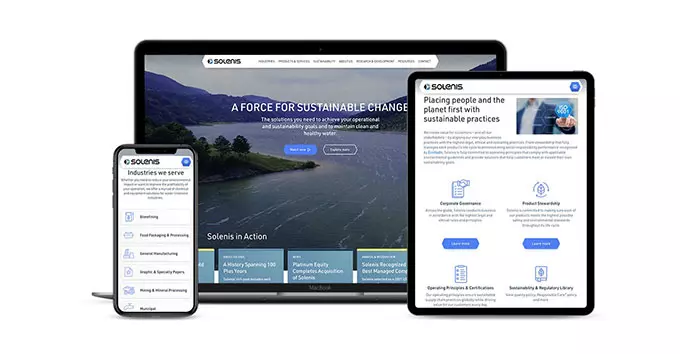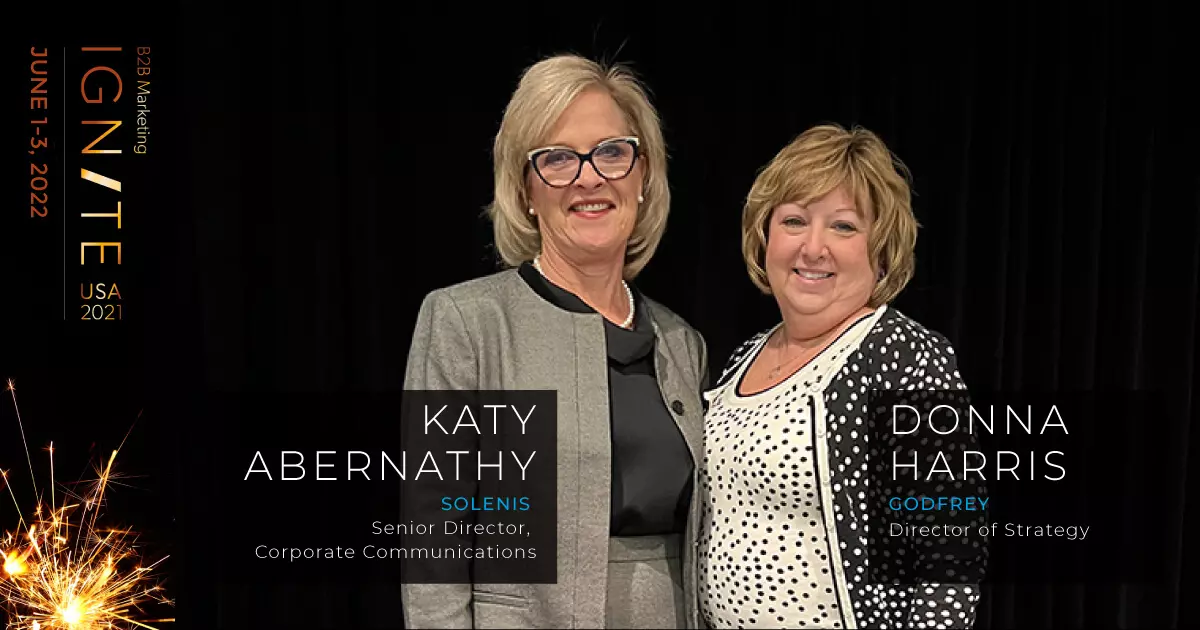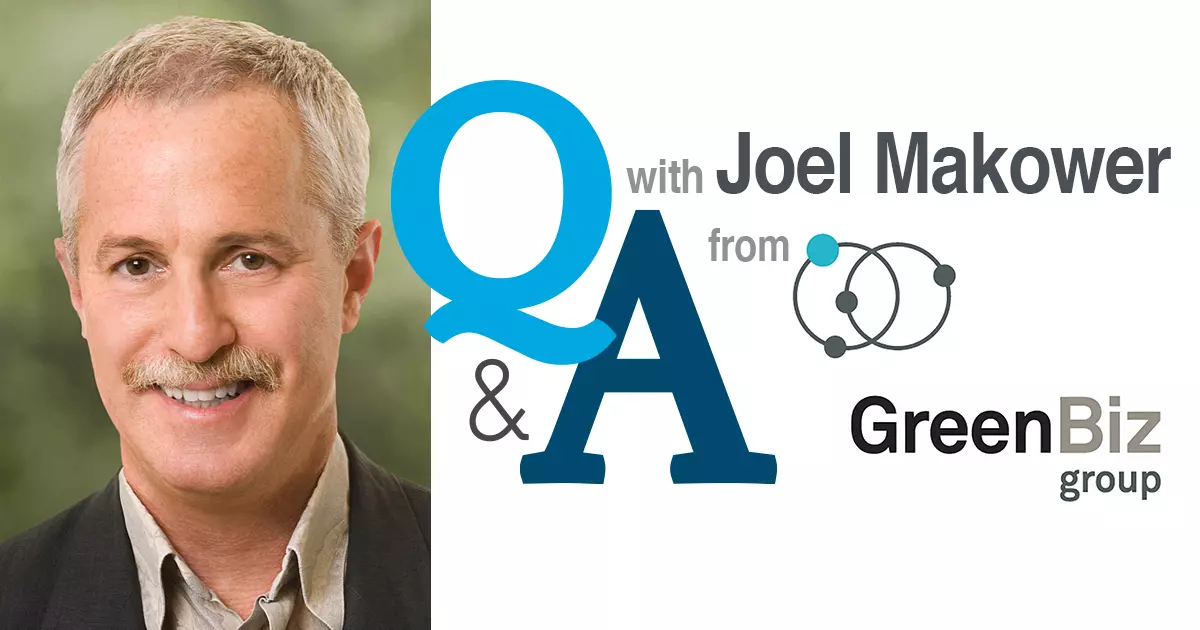The ESG Standard: Why Doing Good Is Good for Business (Part 2)

Environmental, social and governance (ESG) metrics matter to more stakeholders than just your investors. Making ESG communications a fundamental part of your overall communication strategy helps build trust among customers, business partners, employees and more. Here’s part two in our two-part series on why robust ESG programs and communications matter for your business.
From the Margins to the Mainstream
Over the past few years, the role that environmental, social and governance (ESG) metrics play in the business world has changed dramatically. What was once considered “nice-to-have” for a niche group of stakeholders is now recognized as an important indicator of a company’s future performance.
“Today, most mainstream investors, including the world’s largest pension funds and asset managers, see strong ESG scores linked to lower risk, increased resilience and higher profitability,” says Joel Makower, chairman and co-founder of GreenBiz Group, in a recent interview with Godfrey. “ESG has gone from the margins to the mainstream, with tens of billions pouring into these funds every year. The speed at which this has happened has, frankly, been astonishing.”
And it’s not only investors who are looking for ESG excellence. As we outlined in part 1 of this series, employees, customers, business partners and suppliers are all factoring ESG performance into whom they choose to do business with. As a result, companies are rushing to meet new ESG standards, hire ESG talent and incorporate sustainability reports and ESG performance into their marketing communications.
For many companies, they’re already taking actions that would score favorably on an ESG report, but the bigger struggle is knowing how to communicate achievements to all stakeholders. Whether it’s a LEED-certified facility built with tax credits, a flood plain restoration to comply with regulations or more equitable hiring policies to improve retention, these accomplishments can often get buried in reports that never reach a wider audience.
In this blog, we’ll look at the challenges of ESG reporting and discuss some effective communication strategies to ensure your stakeholders know you share their values. We’ll also look at an example of effective ESG communication to show how it can boost your brand.
Proof Over Promises: Your ESG Accomplishments Matter More Than Your Aspirations

There are endless truisms to capture the age-old notion that what you do matters more than what you say. That’s because walking the talk, so to speak, is an essential part of building trust. And trust matters more than ever when it comes to your company’s social capital.
According to aggregated research from Esteban Ortiz-Ospina and Max Roser in Our World in Data, social trust is on the decline in the U.S., with only 30 percent of respondents agreeing that most people can be trusted. Globally, trust in OECD governments and public institutions is also decreasing. This erosion of trust may be why we are seeing increasing demands for action over words, from the protests at the 26th annual UN Climate Change Conference (COP26) this past November to the Black Lives Matter movement in 2020.
What this means for your company’s communication strategy is that demonstrating real-world accomplishments will go much further than a well-crafted mission statement. And verifying those accomplishments with quantifiable data and/or third-party recognition will help reassure your stakeholders that your company is putting shared values into action.
ESG Reporting: It’s a Data Problem
Capturing the right data for ESG reporting can be a source of frustration for companies, investors and other stakeholders interested in ESG. To measure and evaluate ESG performance today, companies must navigate a confusing patchwork of reporting standards and frameworks from various organizations. According to Makower, those organizations include the Global Reporting Initiative (GRI), the Sustainability Accounting Standards Board (SASB), CDP and the International Integrated Reporting Council (IIRC), to name a few, along with more being proposed by the World Economic Forum (WEF), the International Financial Reporting Standards (IFRS) Foundation and the European Union.

The lack of standardization today is the biggest threat to effective ESG disclosures, says global financial consultant firm Duff & Phelps in a blog post. But standardization may be coming soon. IFRS is working to develop sustainability standards globally, and the Security Exchange Commission is taking steps to establish an ESG reporting standard for corporate filings.
In the meantime, public companies are left to make difficult decisions on the best way to capture and report ESG performance, and they have a lot of questions. Those questions range from “How can we disclose more and get credit for the good work we are doing?” to “How do we protect ourselves from ‘greenwashing’ claims and litigation risk?” write Celia Soehner and Jeffrey Boujoukos in Reuters.
According to investors, companies aren’t reporting enough. In a recent survey, 63% of asset managers said the lack of reliable corporate data on ESG activities is a major to moderate challenge to ESG implementation. In the same survey, 85% of fund management firms said ESG is a high priority, but more than half acknowledged that a lack of meaningful metrics is a challenge to achieving those investment priorities.
Many companies are turning to third-party organizations to help validate their ESG performance and reassure stakeholders, sometimes at great cost. Because of the dizzying array of reporting standards, investment firms often rely on these third-party recognitions. But that doesn’t mean they like it.
“Third-party ratings of companies on ESG standards are too simplistic and backwards looking to be useful for investors,” asset managers told the SEC, according to a report in Forbes. Nevertheless, according to a recent study, 38 of the top 50 asset managers use two or more third-party providers of ESG data. That same study lists MSCI, Sustainalytics, ISS-ESG and Vigeo Eiris as the most preferred ESG ratings providers.
For companies looking to attract more investment, the added credibility of third-party recognition may be well worth the cost. But when it comes to appeasing all of your stakeholders, we think Makower put it best in our recent interview: “Overall, the best third-party recognition is from satisfied customers!”
ESG Communications: Making the Most From Your Metrics
Whether companies choose to rely on third-party rating services or compile and report ESG metrics in-house, that data can prove to be an invaluable resource for corporate communications. And the value of ESG metrics extends far beyond attracting investment; it can become a powerful way to connect with customers, build partnerships, retain employees and improve brand perceptions.
CEOs are realizing this, and an explosive number of executives are making it a top priority for their companies. In fact, according to research from Gartner, the percentage of CEOs naming ESG as one of their top five priorities doubled from 2020 to 2021. Also notable, those companies are choosing an ESG communications framework over the traditional, narrower Corporate Social Responsibility framework. In case you missed it, we explain the difference in part 1 of this series.
As a result, ESG goals and performance are becoming an important part of industrywide conversations among everyone from your customers to your competitors. Whether your company is just beginning the ESG journey or you already have a robust ESG reporting framework in place, there are a few key ways to stand out in the ESG conversation:
So What Does This Look Like in the Real World?
To illustrate how these principles can be applied to advance an ESG story, boost brand perception and generate more interest, let’s look at a recent case study.
A global provider in sustainable water treatment and process improvement solutions, Solenis, had recently broadened their focus from environmental sustainability to a more robust ESG platform. With new priorities in place and a plethora of new data reporting on their ESG objectives, Solenis set out to not only develop their first full-fledged sustainability report, but also develop a new ESG-focused brand identity and website.

Their key objectives in this monumental task were threefold: 1) position their company as a leading sustainability solutions provider; 2) drive awareness that Solenis clearly links environmental, social and governance initiatives to value creation; and 3) address investor demand for in-depth company data and information.
Launching their new ESG-driven messaging, reporting and website was an opportunity to open a new chapter in their brand story. Solenis had always stood on the promise of advanced expertise and support, but now their company had grown to encompass a host of sustainability-driving innovations. Moving forward, their brand would represent the same caliber of customer solutions but also a unique force for change in ESG initiatives. It was the same Solenis story but captured through a wider lens.
The new Solenis website puts ESG front and center in a way that complements their brand and communicates their unique value proposition. It also makes relevant ESG metrics and data easily accessible to a variety of audiences, verifying their commitment to being “a force for sustainable change.”
Since the launch of the 100+ page website, Solenis has seen an increase in return visitors and more engagement. This included a 58% increase in Ask an Expert submissions, a 23% increase in contact form submissions and a 24% increase in PDF downloads, the majority of which were related to ESG reporting.
Start Putting Your Own ESG Communications to Work
As ESG becomes an increasingly important focus in the global business community, it will become a mainstay in your company’s marketing communications. No matter where your company is on the ESG journey, finding ways to align your marketing with ESG priorities will be critical to your future success.
If you don’t know where to begin, reach out to an expert at Godfrey to help you tell your ESG story.
And if somehow you’ve made it all the way to the end of this article without knowing what ESG really means, please check out our first installment of this two-part series.
Additional resources:
To read “The ESG Standard: Why Doing Good Is Good for Business (Part 1)," visit our previous blog.
To read the case studies about our work with Solenis, check out “Building a Versatile, ESG-Driven Website and Brand for Solenis.”
To hear about “Turning ESG Data Into Intelligence,” listen to our podcast with Paul Shahriari, Chief Innovation Officer and Founder of Ecomedes.
To read our Q&A with Joel Makower from GreenBiz Group, check out this blog post.
Sign Up for our Newsletter - Get agency updates, industry trends and valuable resources delivered directly to you.
Donna Harris - Director of Strategy
Donna is fascinated with industry trends and market research. She supports account teams with insight and strategic planning and thrives on conquering challenges that keep clients up at night.




